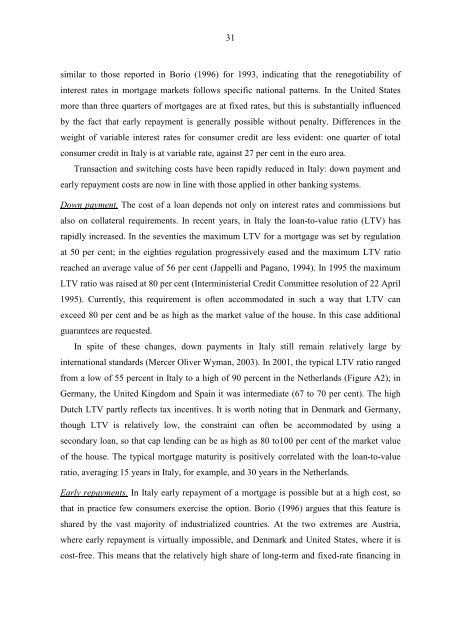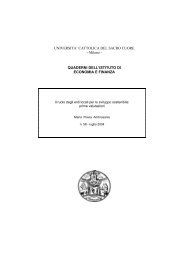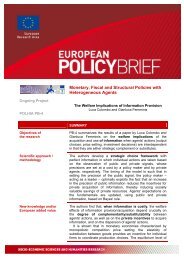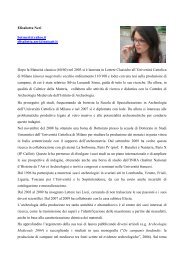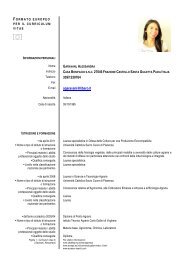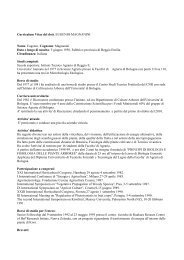REGULATION, FORMAL AND INFORMAL ... - ResearchGate
REGULATION, FORMAL AND INFORMAL ... - ResearchGate
REGULATION, FORMAL AND INFORMAL ... - ResearchGate
You also want an ePaper? Increase the reach of your titles
YUMPU automatically turns print PDFs into web optimized ePapers that Google loves.
31<br />
similar to those reported in Borio (1996) for 1993, indicating that the renegotiability of<br />
interest rates in mortgage markets follows specific national patterns. In the United States<br />
more than three quarters of mortgages are at fixed rates, but this is substantially influenced<br />
by the fact that early repayment is generally possible without penalty. Differences in the<br />
weight of variable interest rates for consumer credit are less evident: one quarter of total<br />
consumer credit in Italy is at variable rate, against 27 per cent in the euro area.<br />
Transaction and switching costs have been rapidly reduced in Italy: down payment and<br />
early repayment costs are now in line with those applied in other banking systems.<br />
Down payment. The cost of a loan depends not only on interest rates and commissions but<br />
also on collateral requirements. In recent years, in Italy the loan-to-value ratio (LTV) has<br />
rapidly increased. In the seventies the maximum LTV for a mortgage was set by regulation<br />
at 50 per cent; in the eighties regulation progressively eased and the maximum LTV ratio<br />
reached an average value of 56 per cent (Jappelli and Pagano, 1994). In 1995 the maximum<br />
LTV ratio was raised at 80 per cent (Interministerial Credit Committee resolution of 22 April<br />
1995). Currently, this requirement is often accommodated in such a way that LTV can<br />
exceed 80 per cent and be as high as the market value of the house. In this case additional<br />
guarantees are requested.<br />
In spite of these changes, down payments in Italy still remain relatively large by<br />
international standards (Mercer Oliver Wyman, 2003). In 2001, the typical LTV ratio ranged<br />
from a low of 55 percent in Italy to a high of 90 percent in the Netherlands (Figure A2); in<br />
Germany, the United Kingdom and Spain it was intermediate (67 to 70 per cent). The high<br />
Dutch LTV partly reflects tax incentives. It is worth noting that in Denmark and Germany,<br />
though LTV is relatively low, the constraint can often be accommodated by using a<br />
secondary loan, so that cap lending can be as high as 80 to100 per cent of the market value<br />
of the house. The typical mortgage maturity is positively correlated with the loan-to-value<br />
ratio, averaging 15 years in Italy, for example, and 30 years in the Netherlands.<br />
Early repayments. In Italy early repayment of a mortgage is possible but at a high cost, so<br />
that in practice few consumers exercise the option. Borio (1996) argues that this feature is<br />
shared by the vast majority of industrialized countries. At the two extremes are Austria,<br />
where early repayment is virtually impossible, and Denmark and United States, where it is<br />
cost-free. This means that the relatively high share of long-term and fixed-rate financing in


